A Novel Processing for CNT-Reinforced Mg-Matrix Laminated Composites to Enhance the Electromagnetic Shielding Property
Abstract
:1. Introduction
2. Experimental Methods
3. Results and Discussion
3.1. CNTs Dispersion
3.2. Microstructure of Laminated Composite
3.3. Electromagnetic Shielding Properties
4. Conclusions
- A new CNTs/Mg matrix laminated composite was prepared by ARB method, which was applied to the field of electromagnetic shielding.
- When the EPD time was 8 min, in the testing frequency of 8.2–12.4 GHz, the SE value was 85–96 dB. The main shielding mechanism was closely related to the layered structure. Since the impedance of adjacent layers was inconsistent, the layered structure increased the multilayer reflection ability.
- Oxide layers and other contaminants could be introduced into the interlayer during EPD and ARB process. Due to the existence of CNTs, the electrical conductivity declined slightly, and the value was 22.07, 21.96 and 21.89 × 106 S/m, respectively.
Author Contributions
Funding
Institutional Review Board Statement
Informed Consent Statement
Data Availability Statement
Conflicts of Interest
References
- Fan, Z.W.; Liu, R.T.; Cheng, X.J. Preparation and characterization of electromagnetic shielding composites based on graphene-nanosheets-loaded nonwoven fabric. Coatings 2021, 11, 424. [Google Scholar] [CrossRef]
- Pan, Y.F.; Yin, D.W.; Yu, X.F. Multilayer-structured wood electroless Cu-Ni composite coatings for electromagnetic interference shielding. Coatings 2020, 10, 740. [Google Scholar] [CrossRef]
- Chen, X.H.; Geng, Y.X.; Pan, F.S. Microstructure, mechanical properties and electromagnetic shielding effectiveness of Mg–Y–Zr–Nd alloy. Rare Met. Mater. Eng. 2016, 45, 13–17. [Google Scholar]
- Chen, X.H.; Liu, J.; Pan, F.S. Enhanced electromagnetic interference shielding in ZK60 magnesium alloy by aging precipitation. J. Phys. Chem. Solids 2013, 74, 872–878. [Google Scholar] [CrossRef]
- Chen, X.H.; Liu, L.Z.; Liu, J. Microstructure, electromagnetic shielding effectiveness and mechanical properties of Mg–Zn–Y–Zr alloys. Mater. Des. 2015, 65, 360–369. [Google Scholar] [CrossRef]
- Song, K.; Pan, F.; Chen, X.; Zhang, Z.; Tang, A.; She, J.; Yu, Z.; Pan, H.; Xu, X. Effect of texture on the electromagnetic shielding property of magnesium alloy. Mater. Lett. 2015, 157, 73–76. [Google Scholar] [CrossRef]
- Wang, J.; Xu, L.; Wu, R. Enhanced electromagnetic interference shielding in a duplex-phase Mg–9Li–3Al–1Zn alloy processed by accumulative roll bonding. Acta Met. Sin. Engl. Lett. 2020, 33, 490–499. [Google Scholar] [CrossRef]
- Luo, Z.; Chen, X.-H.; Song, K.; Liu, C.-Q.; Dai, Y.; Zhao, D.; Pan, F.-S. Effect of alloying element on electromagnetic interference shielding effectiveness of binary magnesium alloys. Acta Met. Sin. Engl. Lett. 2019, 32, 817–824. [Google Scholar] [CrossRef] [Green Version]
- Yang, C.; Pan, F.; Chen, X.; Luo, N. Effects of Sm addition on electromagnetic interference shielding property of Mg–Zn–Zr alloys. Appl. Phys. A Mater. Sci. Process. 2017, 123, 400. [Google Scholar] [CrossRef]
- Gao, S.; Chen, X.; Pan, F.; Song, K.; Zhao, C.; Liu, L.; Liu, X.; Zhao, D. Effect of secondary phase on the electromagnetic shielding effectiveness of magnesium alloy. Sci. Rep. 2018, 8, 1–14. [Google Scholar] [CrossRef]
- Jian, H.; Qinglong, Z.; Yanxia, N.; Fangkun, N.; Le, Q.; Hou, J.; Zhang, Q.; Niu, Y.; Ning, F. Electromagnetic shielding property of duplex magnesium alloy with laminated structure processed by accumulative roll bonding. Mater. Res. Express 2018, 5, 066533. [Google Scholar] [CrossRef]
- Chandra, R.B.J.; Shivamurthy, B.; Kulkarni, S.D.; Kumar, M.S. Hybrid polymer composites for EMI shielding application- a review. Mater. Res. Express 2019, 6, 082008. [Google Scholar] [CrossRef]
- Shen, B.; Li, Y.; Zhai, W.T. Compressible graphene-coated polymer foams with ultralow density for adjustable electromagnetic interference (EMI) shielding. ACS Appl. Mater. Interfaces 2016, 8, 8050–8057. [Google Scholar] [CrossRef] [PubMed]
- Dziková, J.; Fintová, S.; Kajánek, D.; Florková, Z.; Wasserbauer, J.; Doležal, P. Characterization and corrosion properties of fluoride conversion coating prepared on AZ31 magnesium alloy. Coatings 2021, 11, 675. [Google Scholar] [CrossRef]
- Mu, L.; Sun, Q.; Cui, G.; Yuan, S.; Wang, J.; Ma, Z.; Li, M. Preparation and characterization of sustained-release naringin coating on magnesium surface. Coatings 2021, 11, 288. [Google Scholar] [CrossRef]
- Wang, S.; Fu, L.; Nai, Z.; Liang, J.; Cao, B. Comparison of corrosion resistance and cytocompatibility of MgO and ZrO2 coatings on AZ31 magnesium alloy formed via plasma electrolytic oxidation. Coatings 2018, 8, 441. [Google Scholar] [CrossRef] [Green Version]
- Liu, L.; Chen, X.; Pan, F.; Wang, Z.; Liu, W.; Cao, P.; Yan, T.; Xu, X. Effect of Y and Ce additions on microstructure and mechanical properties of Mg–Zn–Zr alloys. Mater. Sci. Eng. A 2015, 644, 247–253. [Google Scholar] [CrossRef]
- Liu, L.Z.; Pan, F.S.; Chen, X.H. The effect of Y addition on recrystallization and mechanical properties of Mg–6Zn–xY–0.5Ce–0.4Zr alloys. Vacuum 2018, 155, 445–455. [Google Scholar] [CrossRef]
- Liu, L.; Chen, X.; Pan, F.; Tang, A.; Wang, X.; Liu, J.; Gao, S. Microstructure, texture, mechanical properties and electromagnetic shielding effectiveness of Mg–Zn–Zr–Ce alloys. Mater. Sci. Eng. A 2016, 669, 259–268. [Google Scholar] [CrossRef]
- Qiao, L.; Zhu, K.L.; Tan, H.S. Effect of carbon nanotubes on the electrical, thermal, mechanical properties and crystallization behavior of continuous carbon fiber reinforced polyether-ether-ketone composites. Mater. Res. Express 2021, 8, 045312. [Google Scholar] [CrossRef]
- Yang, S.-Y.; Lin, W.-N.; Huang, Y.-L.; Tien, H.-W.; Wang, J.-Y.; Ma, C.-C.M.; Li, S.-M.; Wang, Y.-S. Synergetic effects of graphene platelets and carbon nanotubes on the mechanical and thermal properties of epoxy composites. Carbon 2011, 49, 793–803. [Google Scholar] [CrossRef]
- Yuan, Q.-H.; Fu, D.-M.; Zeng, X.-S.; Liu, Y. Fabrication of carbon nanotube reinforced AZ91D composite with superior mechanical properties. Trans. Nonferr. Met. Soc. China 2017, 27, 1716–1724. [Google Scholar] [CrossRef]
- Strozzi, M.; Pellicano, F. Nonlinear resonance interaction between conjugate circumferential flexural modes in single-walled carbon nanotubes. Shock Vib. 2019, 2019, 3241698. [Google Scholar] [CrossRef]
- Strozzi, M.; Smirnov, V.V.; Manevitch, L.I. Nonlinear normal modes, resonances and energy exchange in single-walled carbon nanotubes. Int. J. Non-Linear Mech. 2020, 120, 103398. [Google Scholar] [CrossRef]
- Giannopoulos, F.; Chronopoulou, N.; Bai, J.; Zhao, H.; Pantelis, D.; Pavlatou, E.; Karantonis, A. Nickel/MWCNT–Al2O3 electrochemical co-deposition: Structural properties and mechanistic aspects. Electrochim. Acta 2016, 207, 76–86. [Google Scholar] [CrossRef]
- Mosallanejad, M.H.; Shafyei, A.; Akhavan, S. Simultaneous co-deposition of SiC and CNT into the Ni coating. Can. Metall. Q. 2016, 55, 1–9. [Google Scholar] [CrossRef]
- Tseluikin, V.N.; Koreshkova, A.A. Electrodeposition of zinc-nickel-carbon nanotubes composite coatings in a reversing mode. Prot. Met. Phys. Chem. Surf. 2016, 52, 1040–1042. [Google Scholar] [CrossRef]
- Chang, H.; Zheng, M.Y.; Xu, C. Microstructure and mechanical properties of the Mg/Al multilayer fabricated by accumulative roll bonding (ARB) at ambient temperature. Mater. Sci. Eng. A 2012, 543, 249–256. [Google Scholar] [CrossRef]
- Wu, K.; Chang, H.; Maawad, E.; Gan, W.; Brokmeier, H.; Zheng, M. Microstructure and mechanical properties of the Mg/Al laminated composite fabricated by accumulative roll bonding (ARB). Mater. Sci. Eng. A 2010, 527, 3073–3078. [Google Scholar] [CrossRef]
- Meng, L.; Wang, X.; Hu, X.; Shi, H.; Wu, K. Role of structural parameters on strength-ductility combination of laminated carbon nanotubes/copper composites. Compos. Part A Appl. Sci. Manuf. 2018, 116, 138–146. [Google Scholar] [CrossRef]
- Meng, L.; Wang, X.; Ning, J.; Hu, X.; Fan, G.; Wu, K. Beyond the dimensional limitation in bio-inspired composite: Insertion of carbon nanotubes induced laminated Cu composite and the simultaneously enhanced strength and toughness. Carbon 2018, 130, 222–232. [Google Scholar] [CrossRef]
- Strozzi, M.; Pellicano, F. Linear vibrations of triple-walled carbon nanotubes. Math. Mech. Solids 2018, 23, 1456–1481. [Google Scholar] [CrossRef]
- He, X.Q.; Eisenberger, M.; Liew, K.M. The effect of van der Waals interaction modeling on the vibration characteristics of multiwalled carbon nanotubes. J. Appl. Phys. 2006, 100, 124317. [Google Scholar] [CrossRef]
- Niu, Y.; Liu, Q.; Yang, J.; Gao, D.; Qin, X.; Luo, D.; Zhang, Z.; Li, Y. Surface-enhanced raman spectroscopy of carbon nanotubes in aqueous solution. Acta Chim. Sin. 2012, 70, 1533–1537. [Google Scholar] [CrossRef] [Green Version]
- Wepasnick, K.A.; Smith, B.A.; Bitter, J.L.; Fairbrother, D.H. Chemical and structural characterization of carbon nanotube surfaces. Anal. Bioanal. Chem. 2010, 396, 1003–1014. [Google Scholar] [CrossRef]
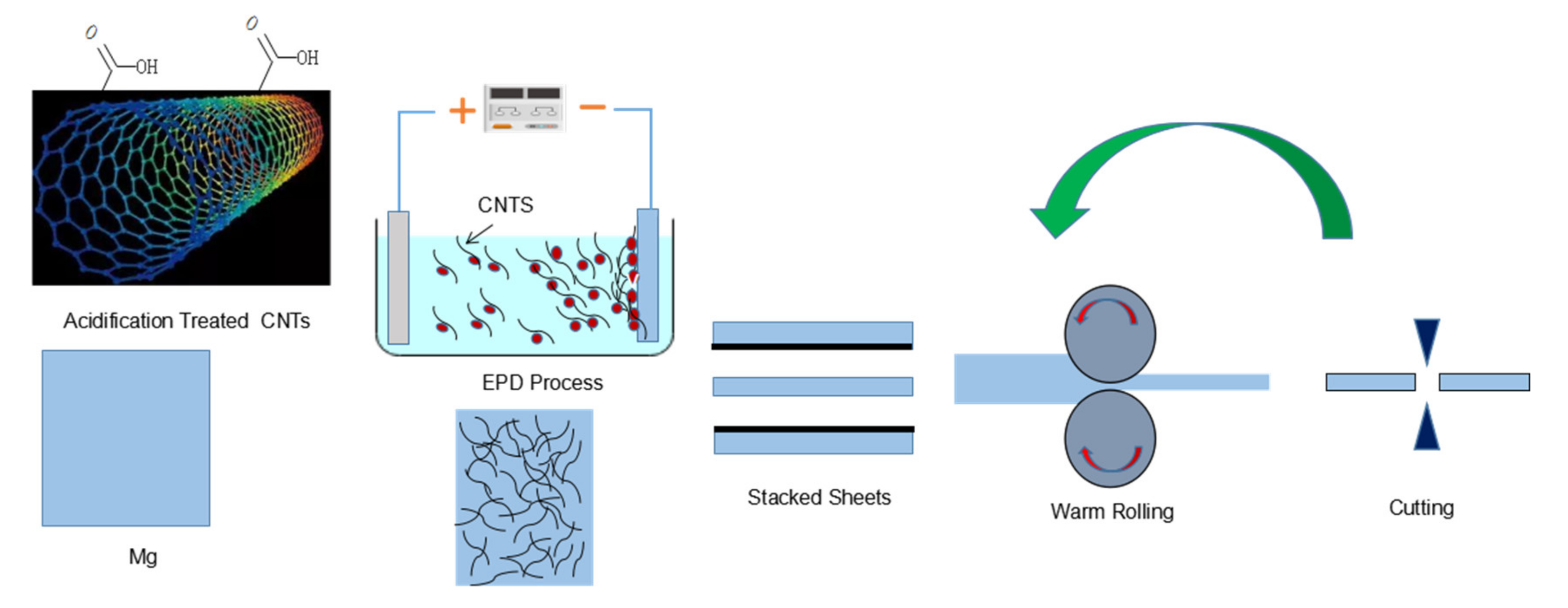
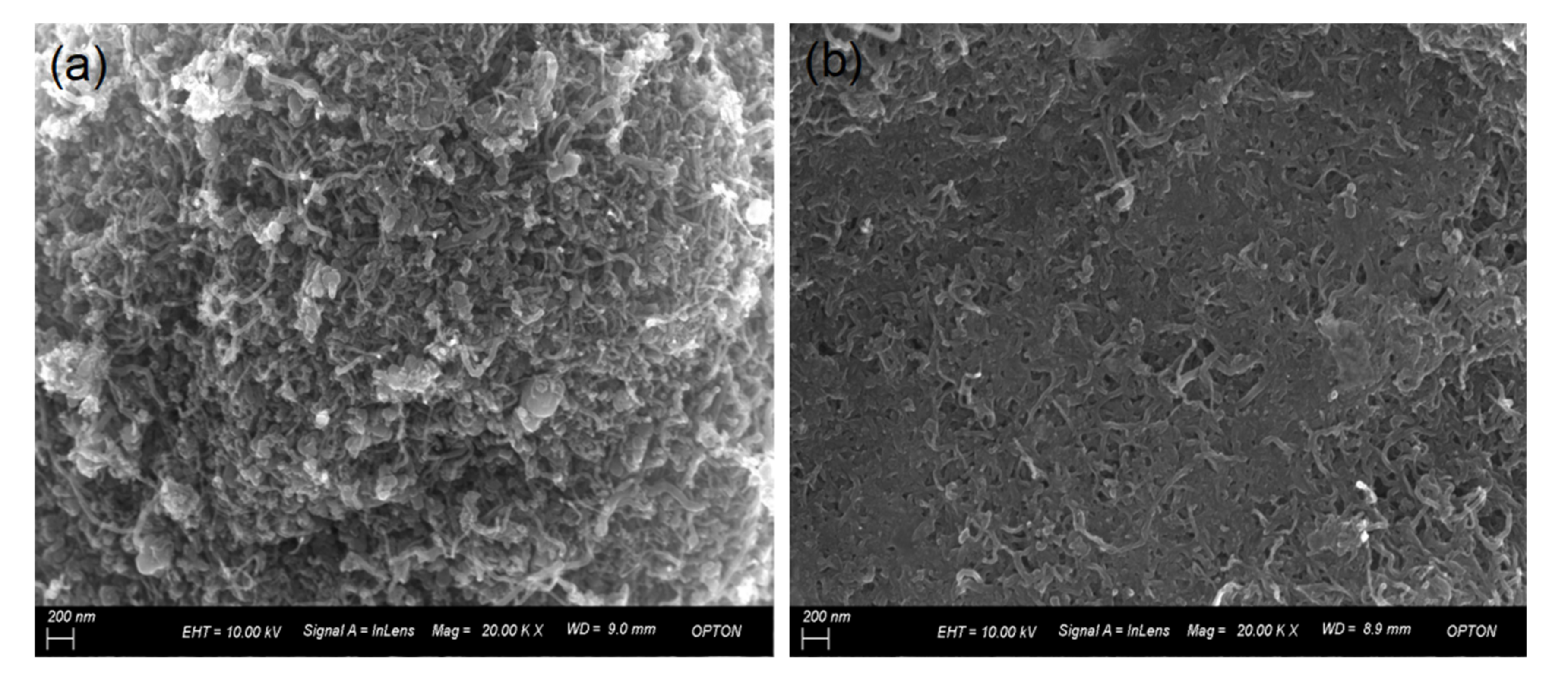
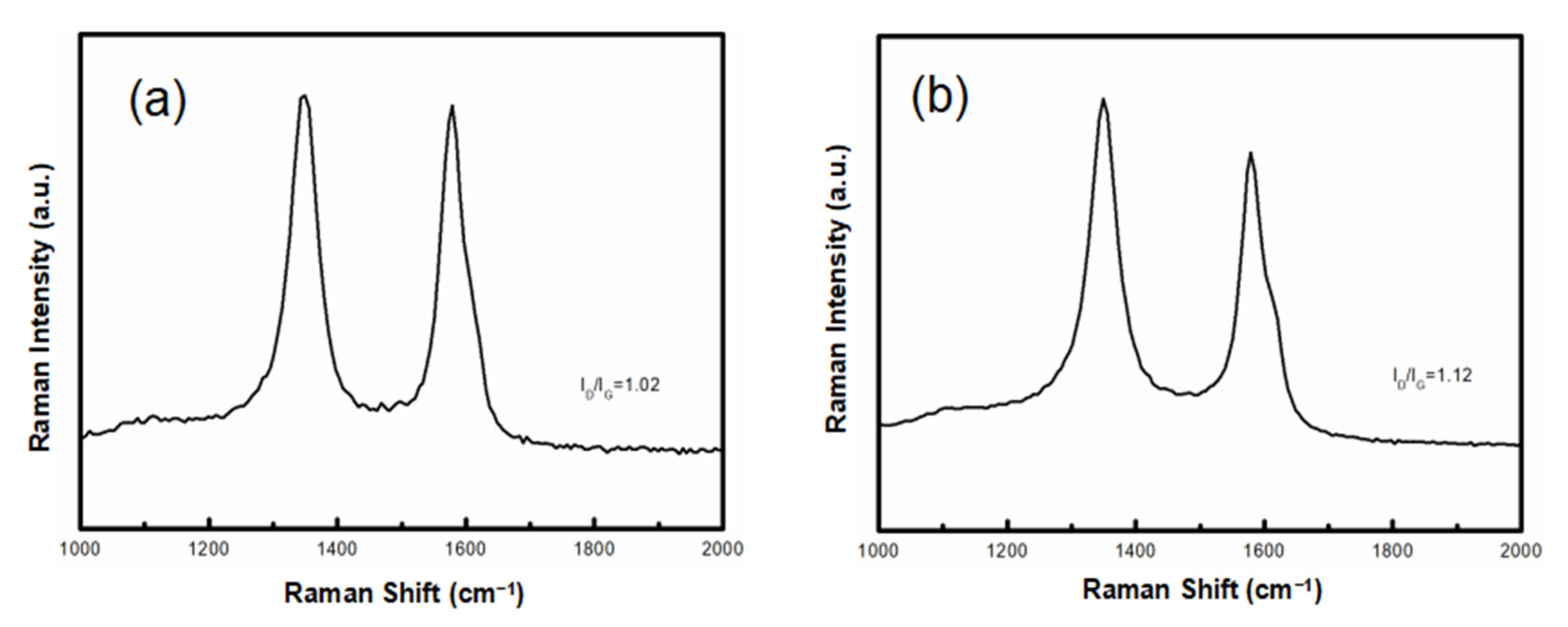
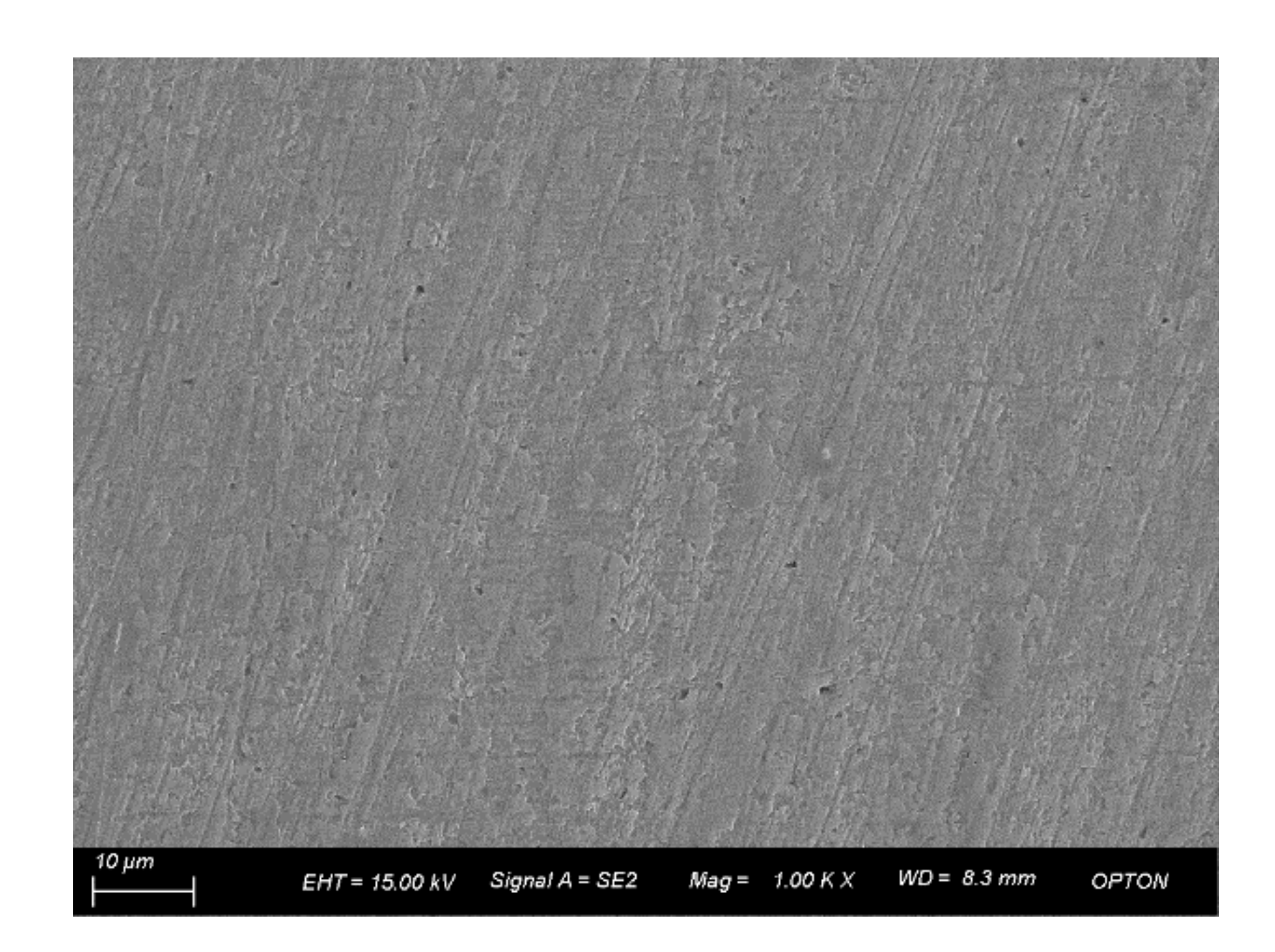
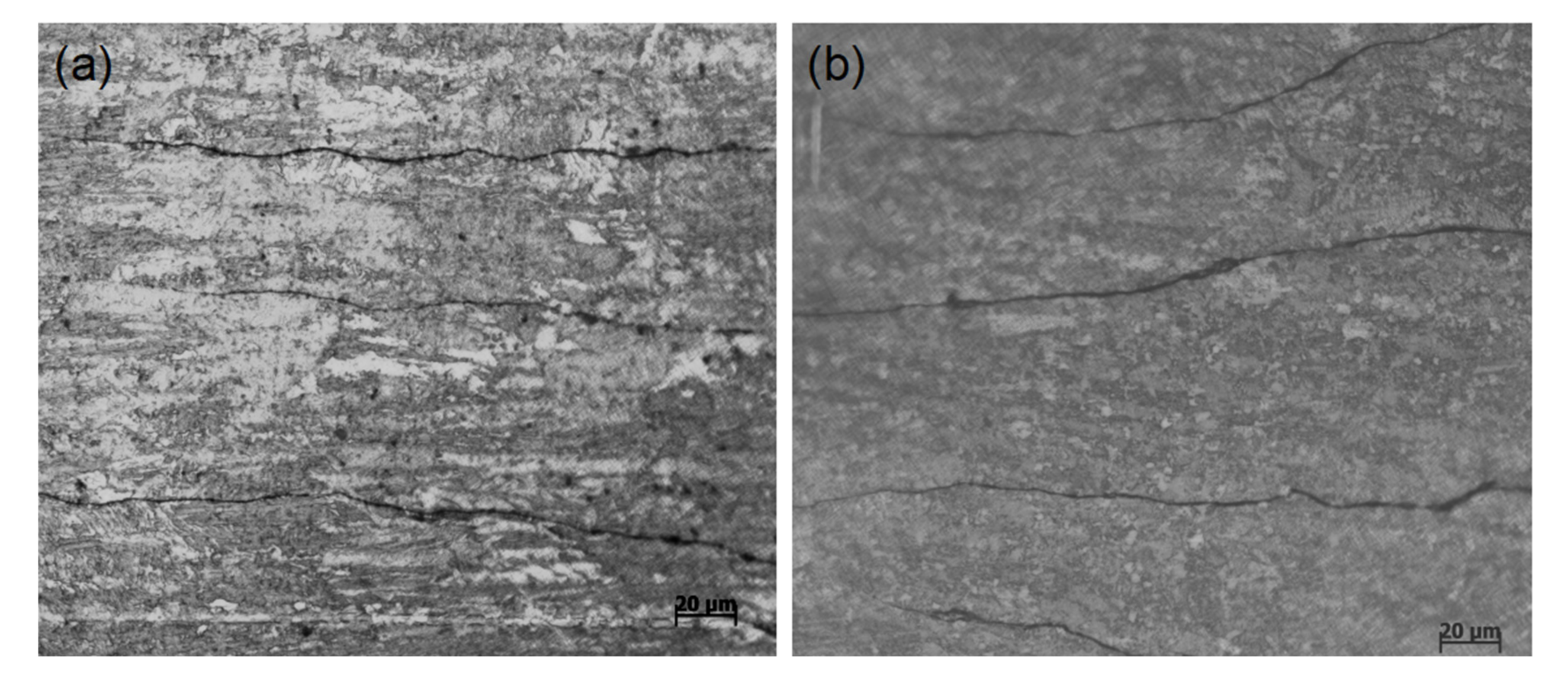
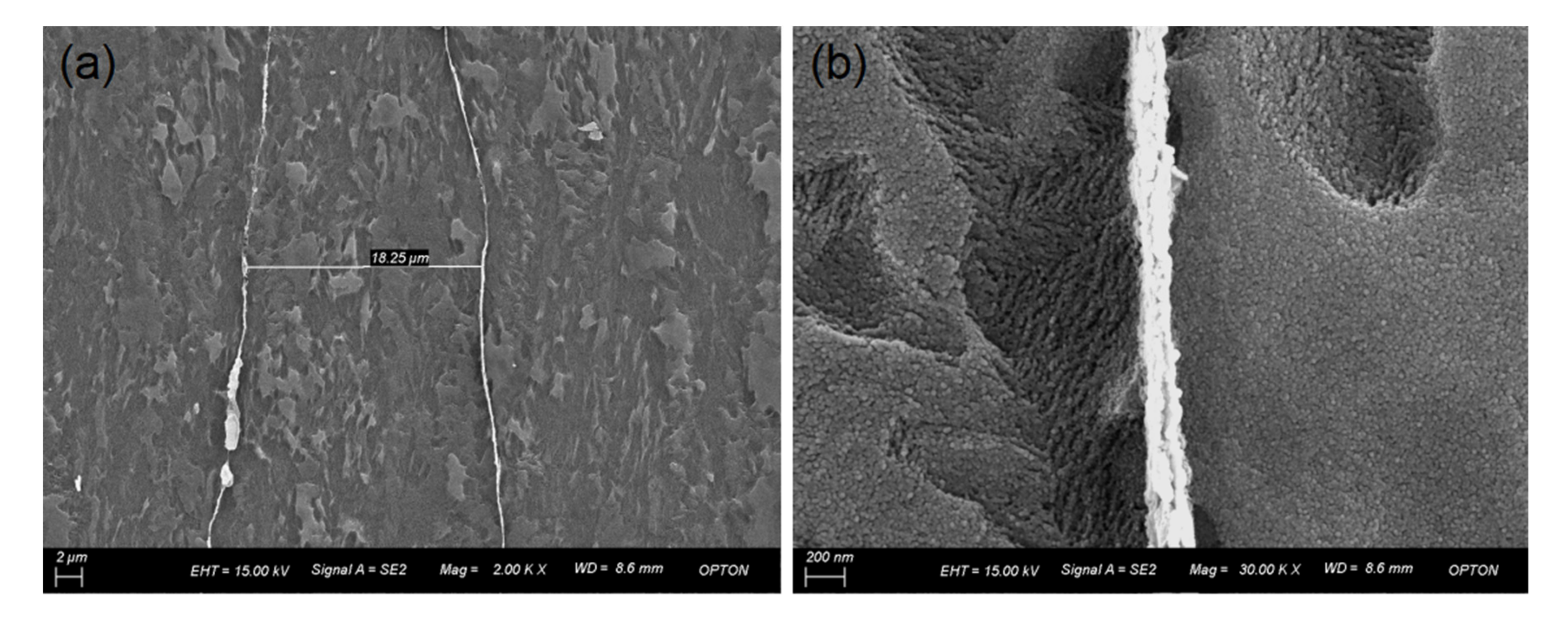
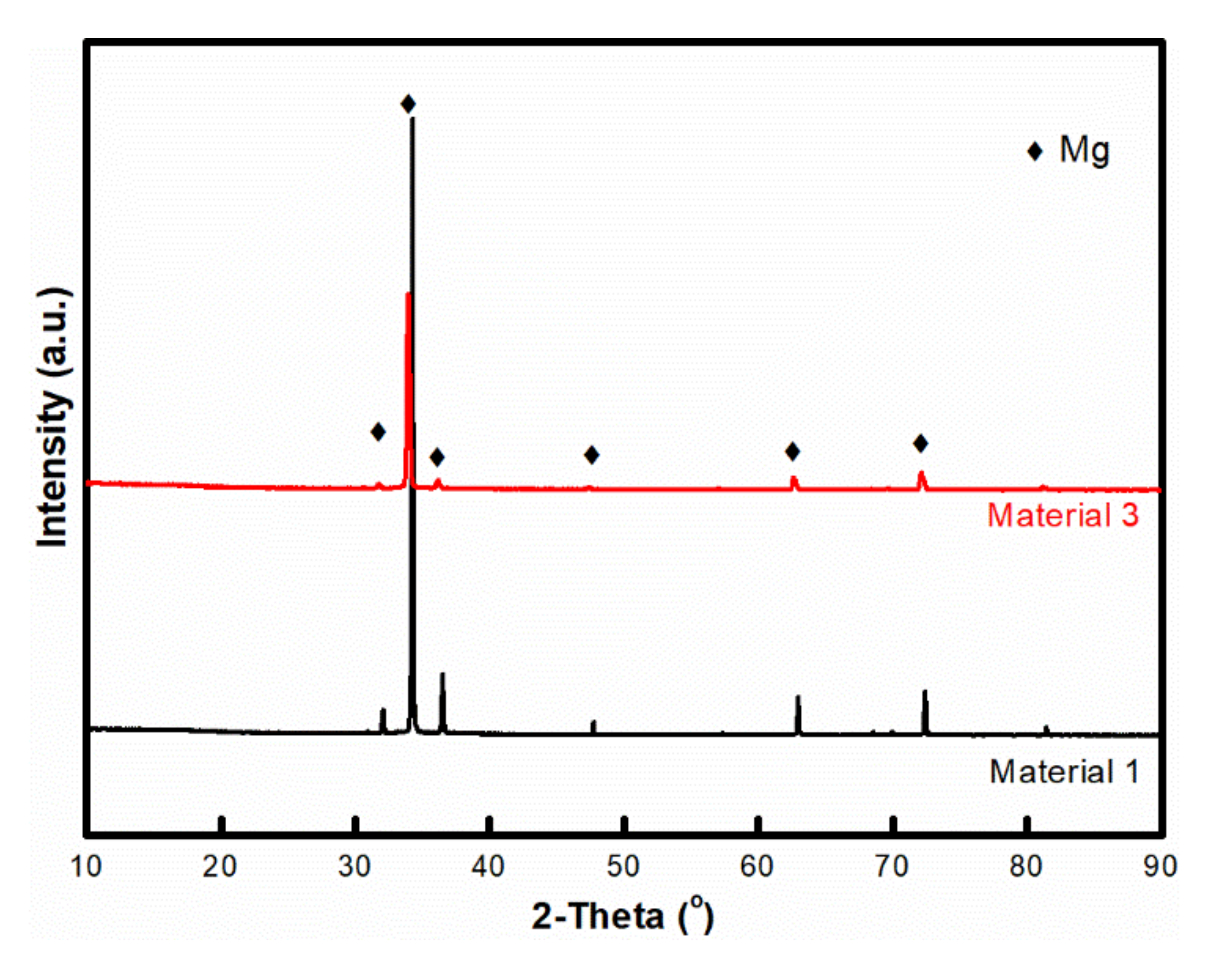

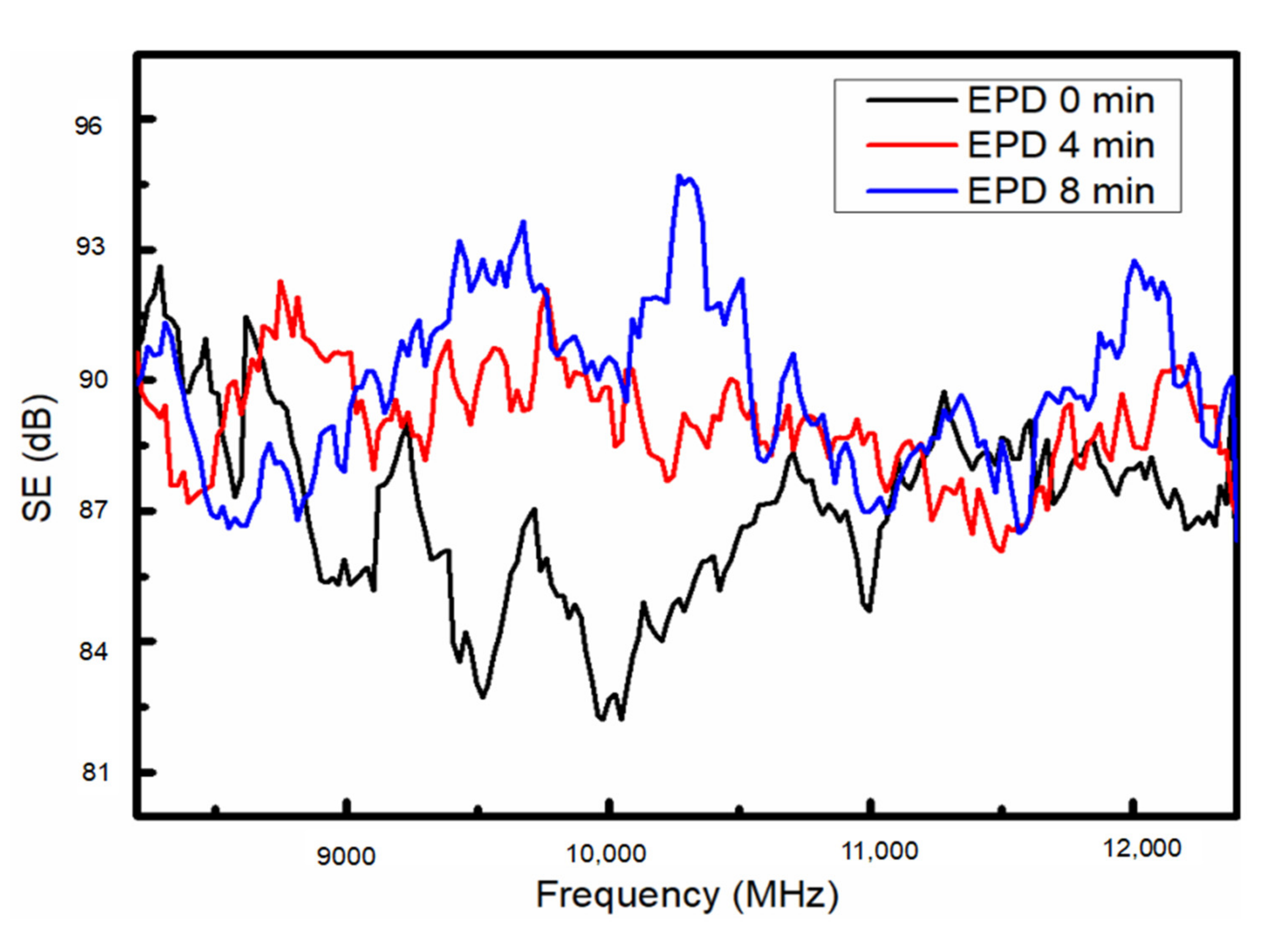

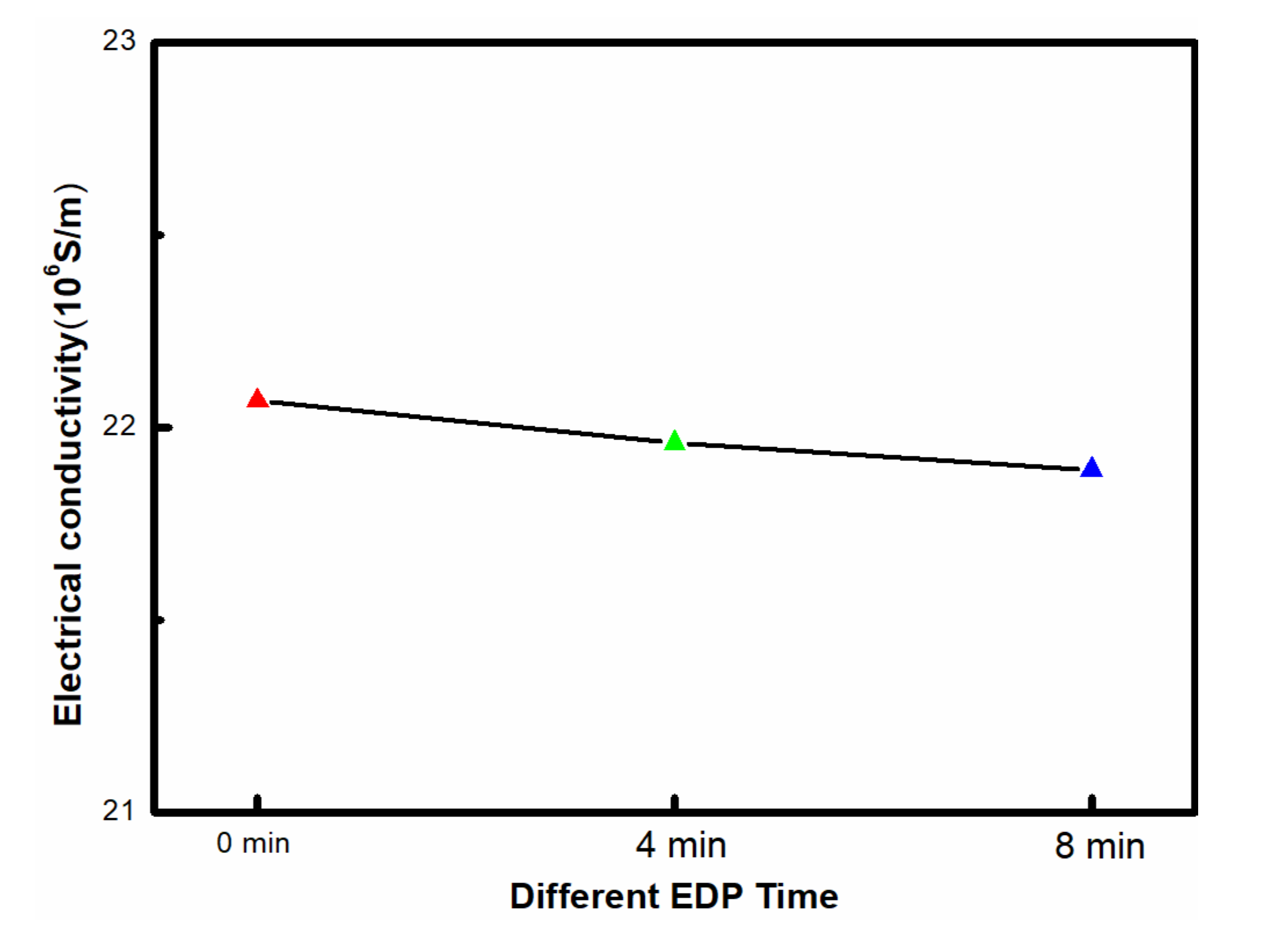
Publisher’s Note: MDPI stays neutral with regard to jurisdictional claims in published maps and institutional affiliations. |
© 2021 by the authors. Licensee MDPI, Basel, Switzerland. This article is an open access article distributed under the terms and conditions of the Creative Commons Attribution (CC BY) license (https://creativecommons.org/licenses/by/4.0/).
Share and Cite
Zhang, W.; Zhao, H.; Hu, X.; Ju, D. A Novel Processing for CNT-Reinforced Mg-Matrix Laminated Composites to Enhance the Electromagnetic Shielding Property. Coatings 2021, 11, 1030. https://doi.org/10.3390/coatings11091030
Zhang W, Zhao H, Hu X, Ju D. A Novel Processing for CNT-Reinforced Mg-Matrix Laminated Composites to Enhance the Electromagnetic Shielding Property. Coatings. 2021; 11(9):1030. https://doi.org/10.3390/coatings11091030
Chicago/Turabian StyleZhang, Wanshun, Hongyang Zhao, Xiaodong Hu, and Dongying Ju. 2021. "A Novel Processing for CNT-Reinforced Mg-Matrix Laminated Composites to Enhance the Electromagnetic Shielding Property" Coatings 11, no. 9: 1030. https://doi.org/10.3390/coatings11091030




